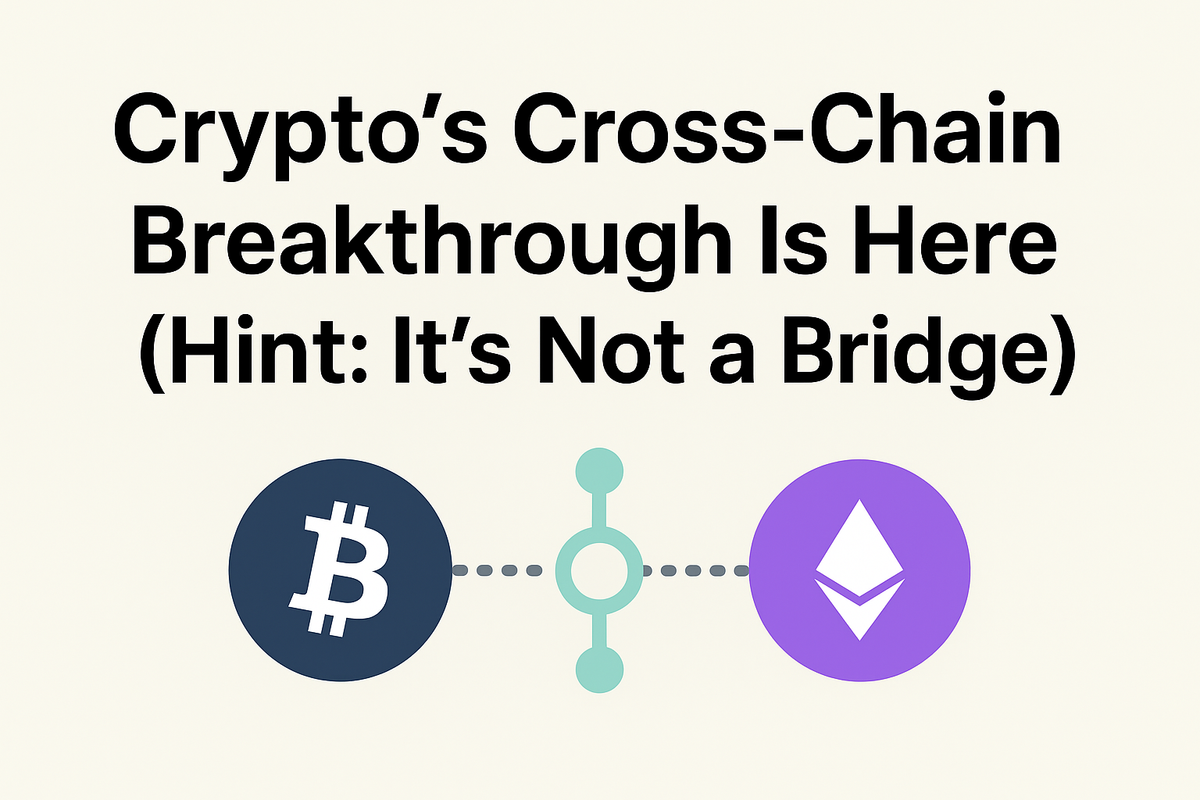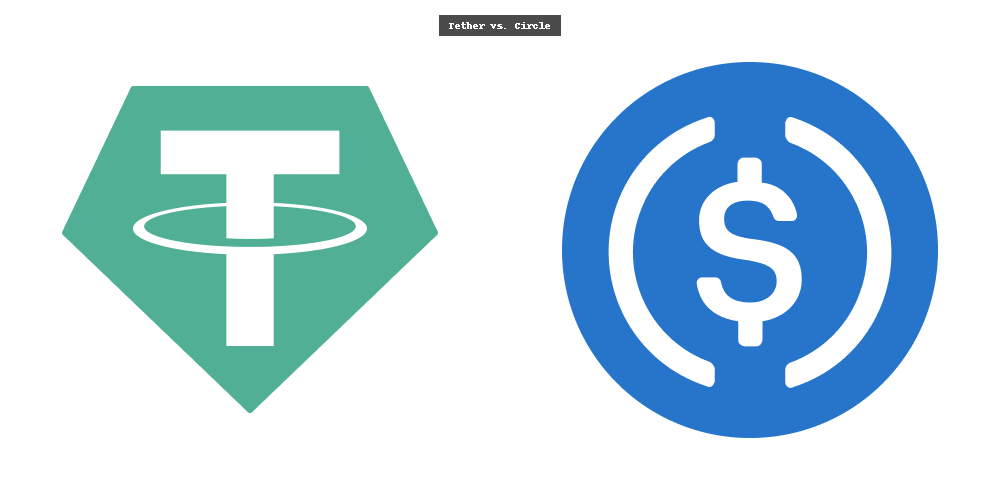Crypto’s Cross-Chain Breakthrough Is Here (Hint: It’s Not a Bridge)

Introduction: The Cross-Chain Dream
For years, crypto builders and everyday users have dreamed of a world where blockchains could talk to each other freely. Imagine sending money, NFTs, or tokens from Ethereum to Avalanche, or from Solana to Arbitrum, with the same ease as sending an email. No friction. No middlemen. No “wrong chain” headaches.
But here’s the truth: until recently, that dream was stuck in limbo. The main tool we had was bridges and they weren’t great. Bridges promised to move assets across blockchains, but they came with serious baggage: hacks, high fees, slow transfers, and a poor user experience.
Now, something new is emerging. A cross-chain breakthrough that’s not built on fragile bridges, but on a deeper idea: liquidity layers and programmable user layers. This shift is about creating a seamless, chain-agnostic experience that feels natural, safe, and instant.
And it changes everything.
Why Bridges Were a Temporary Fix
To understand why this breakthrough matters, we need to look back at bridges.
Bridges became popular because blockchains were built in silos. Ethereum was its own world, Solana its own world, Avalanche another, and so on. Each had assets, apps, and users but no way to connect directly.
A bridge solved this by locking tokens on one chain and issuing a wrapped version on another. For example: lock 1 ETH on Ethereum, mint 1 “bridged ETH” on Avalanche.
It sounds clever, but in practice, it created big problems:
- Security risks: Bridges became prime hacking targets. Billions have been stolen in bridge exploits, like the Ronin and Wormhole hacks.
- Liquidity fragmentation: Instead of one pool of ETH, you had many versions ETH, bridged ETH, wrapped ETH, etc. Liquidity was scattered and confusing.
- Bad user experience: Transfers could take minutes or hours, and fees often piled up. If you picked the wrong bridge, your tokens might get stuck.
- Lack of trust: Many bridges relied on centralized validators or multisigs, which defeated the whole “decentralized” ethos of crypto.
Bridges were never meant to be the final answer. They were like patching a hole in the roof with duct tape, good enough for now, but not something you’d build a future on.
The Real Problem: Liquidity, Not Just Movement
If we zoom out, the problem isn’t just moving assets across blockchains, it’s about liquidity.
Liquidity is what makes crypto markets work. It’s the pool of tokens available for trading, lending, staking, and building apps. Without liquidity, DeFi dries up.
The trouble with bridges is that they split liquidity across multiple versions of the same asset. Instead of one big pool of ETH everyone can use, you end up with little scattered puddles: ETH on Ethereum, bridged ETH on Avalanche, wrapped ETH on Polygon, and so on.
That’s inefficient. It’s like having money locked in ten different wallets, none of which talk to each other.
The real breakthrough isn’t just moving tokens across chains, it’s making liquidity itself borderless.
Enter the Cross-Chain Liquidity Layer
The new approach is about creating a shared liquidity layer that all chains can tap into.
Instead of copying tokens from one chain to another, this system lets applications on any chain access the same pool of liquidity, no matter where it lives.
Think of it like this:
- With bridges, if you wanted to spend dollars in another country, you’d have to physically carry the cash, trade it for the local currency, and hope nothing went wrong.
- With a liquidity layer, it’s like having a universal debit card. You can spend anywhere, and behind the scenes, the system pulls from the same bank account.
This idea flips cross-chain activity on its head. Instead of users carrying assets from chain to chain, liquidity becomes programmable, accessible, and unified.
Why This Is Different from a Bridge
Here’s what makes liquidity layers different from bridges:
- No Wrapped Tokens
- You’re not minting endless copies of assets. You’re using the real thing, connected through a shared layer.
- One Liquidity Pool, Many Chains
- Liquidity isn’t split or duplicated. Apps on Ethereum, Solana, or Avalanche can all pull from the same source.
- Instant and Seamless
- Transactions feel native, without the delays and risks of moving assets.
- Programmable User Layer
- Developers can build smarter apps on top like yield strategies, swaps, or lending that work cross-chain by default.
- More Secure
- Instead of relying on fragile bridges, this design can leverage decentralized validators, MPC networks, or cryptographic proofs to ensure security.
In short: this isn’t duct tape. This is a foundation.
Real-World Analogy: The Internet Before and After
To really get the picture, let’s use an analogy.
Before the internet, if you wanted to send a message from one network to another, it was messy. Different systems couldn’t talk easily. Each had its own protocols, its own way of doing things.
Then came the internet protocol (TCP/IP), a universal standard that allowed all networks to connect. Suddenly, sending an email from one service to another became effortless.
That’s what’s happening in crypto now. Bridges were like the early, clunky attempts to connect private networks. Liquidity layers are like TCP/IP for blockchains, a universal system that makes cross-chain activity natural.
Why This Matters for DeFi
DeFi today is powerful, but it’s still fragmented. Each chain is its own island. If you want to chase yields, trade tokens, or use lending apps, you often have to hop between bridges, swap wrapped assets, and deal with high costs.
With a cross-chain liquidity layer:
- Yield becomes programmable: Instead of locking into one chain, you could earn from opportunities across many chains, automatically.
- Trading becomes borderless: Imagine swapping ETH on Ethereum for SOL on Solana in one click, without touching a bridge.
- Lending gets stronger: Liquidity isn’t stuck on one chain, so lending markets can be deeper and more stable.
- Builders get superpowers: Developers can build apps that are instantly multi-chain, without reinventing the wheel.
For users, this means less stress. No more worrying about “which chain” your assets are on. For builders, it means more efficiency. For the ecosystem, it means growth.
The Role of Projects Like Mitosis
This is where projects like Mitosis step in.
Mitosis is building what you could call the cross-chain liquidity engine of DeFi. Instead of patching problems with bridges, it’s creating a programmable user layer on top of liquidity that works across chains.
- Matrix Vaults: Shared liquidity vaults that any app can tap into.
- Programmable Yield: Liquidity isn’t just stored, it can be programmed to seek the best opportunities.
- Borderless Access: Users interact with Mitosis like a single hub, but it works across many chains behind the scenes.
Mitosis is part of a bigger movement toward modular liquidity, a design where liquidity isn’t tied down to one place but can flow freely where it’s needed.
The End of Bridges as We Know Them
Does this mean bridges disappear? Not exactly. They’ll still exist, especially for moving unique assets like NFTs or for connecting chains with very different architectures.
But the center of gravity is shifting. Instead of relying on bridges for every move, most activity will flow through shared liquidity layers.
It’s like how we don’t think about “dial-up modems” anymore. They played a role, but they’re obsolete in the face of broadband.
Bridges were the dial-up of crypto. Liquidity layers are broadband.
The Road Ahead: What Comes Next
This breakthrough opens the door to a lot of possibilities:
- Unified Wallets: Instead of juggling 10 wallets across chains, one interface could manage all your assets.
- Cross-Chain Apps: Developers can build apps that live across chains by default, like games where assets flow freely between ecosystems.
- Institutional Adoption: Big players who were wary of bridge hacks may finally feel confident entering DeFi with borderless liquidity.
- New Business Models: Protocols can monetize cross-chain activity in ways that weren’t possible before.
And the best part? Users won’t even notice. They’ll just experience crypto as it was always meant to be: smooth, global, and unified.
Conclusion: The Real Breakthrough
The crypto world has always been about breaking barriers between people, between finance, between borders. Cross-chain was the next barrier to fall.
Bridges tried to solve it, but they were clunky and unsafe. The real breakthrough is here now, and it’s not a bridge. It’s a new way of thinking: a cross-chain liquidity layer that makes blockchains feel like one unified system.
For DeFi, this is the moment it grows up.
For users, this is the moment it gets simple.
For builders, this is the foundation they’ve been waiting for.
The cross-chain dream is no longer a dream, it’s reality. And it’s going to reshape crypto forever.



Comments ()